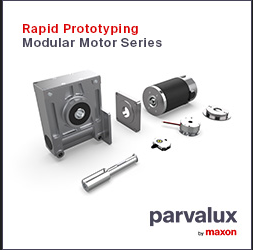Algorithms can change plant maintenance forever
Over the past five years, the industrial sector has begun to see the value in digitalisation and has invested more in adopting it. With this has come a cultural shift from reactive equipment maintenance to proactive maintenance that pre-empts problems. Here, Sean Robinson, service leader at industrial analytics platform supplier Novotek UK & Ireland, explains how plant managers can make proactive maintenance even more effective with machine learning.
In 2006, UK mathematician Clive Humby claimed that "data is the new oil". Whether youre a food processing company or an automotive manufacturer, data from production processes is the cornerstone of better efficiency, effectiveness and overall performance.
Plant managers that are familiar with the industrial internet of things (IIoT) will know that one of the concepts biggest selling points has been the insight it can provide into equipment performance and process effectiveness, which in turn creates benefits for the companys bottom-line.
This has changed the culture of maintenance in plants that have started adopting IIoT technology. Rather than responding to a breakage or conducting planned maintenance based on expected equipment lifespan, engineers can make informed decisions about when to maintain systems based on the equipments condition.
Minimising unplanned downtime has obvious benefits, but its the reduction in scheduled downtime that adds significant value in terms of increased overall throughput for no new capital outlay. However, achieving this is challenging due to the volume of data and subsequent analysis that is required to confidently change maintenance schedules.
This is where an opportunity arises for machine learning in industrial maintenance. With machine learning, algorithms can be trained to identify correlating factors in data to not only flag up a problem but also the root cause of it. It sounds straightforward in principle, but the number of potential things to consider can be too high for a human to work through effectively.
Within a single machine, there can be dozens of sensors or other health signals. To get a clear picture of all the things that affect reliability, that data should be evaluated alongside things like maintenance records and a history of what the machine was running. Even ambient conditions and crew data can give clues as to what issues can crop up.
The only effective way to navigate the abundance of variables is with an IoT platform with machine learning, such as GE Digitals Predix platform and Asset Performance Management (APM) suite. Connecting an IoT-enabled machine to the platform allows Predixs machine learning algorithms to analyse it with the APMs combination of standard measures and advanced analytics. This allows maintenance staff to not only spot when a machine needs maintenance, but also why.
For example, a semiconductor manufacturer might find that it rejects ten per cent of its output due to faults in the manufacturing process. Although all the machines may be IoT-connected, there is too much data for an engineer to reasonably analyse. With Predixs machine learning algorithms, the APM could, for example, identify that a machine has elevated vibration levels, which is damaging the semiconductors.
The algorithms can then assess this against historic data to spot patterns in how often this occurs, identify the performance signs that precede it and - if integrated into a management system - send alerts to engineers as the machine requires maintenance. This makes it possible for the machine to receive maintenance only when its conditions indicate it should, changing from preventative to condition-based predictive maintenance.
In effect, machine learning allows maintenance data analysis to become a more automated process. In fact, there are certain industrial applications where the algorithms could be permitted to directly reconfigure a machine with the right settings. And as machine algorithms learn, this will become an increasingly viable way of improving efficiency.
Whether you believe data is the new oil or not, its indisputable that its a valuable resource that fuels overall operational improvement for plant managers and maintenance engineers. The key to achieving this is to use industrial analytics intelligently and effectively to strike oil in industrial maintenance.
Featured Product

